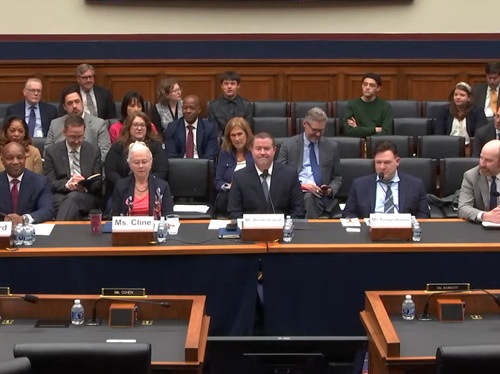A subcommittee within the House of Representatives Committee on Transportation and Infrastructure recently held a hearing to review the nation’s transit policies and programs – especially their impact on rural parts of the country – as Congress begins work on the next multiyear surface transportation reauthorization bill.
[Above photo via the House T&I Committee]
Held by the Subcommittee on Highways and Transit on April 9, that hearing elicited insights from five witnesses: Nathaniel Ford Sr., CEO of the Jacksonville Transportation Authority (JTA) on behalf of the American Public Transportation Association (APTA); Barbara Cline, executive director of Prairie Hills Transit (PHT) on behalf of the Community Transportation Association of America; Matthew Booterbaugh, CEO of RATP Dev USA on behalf of the North American Transit Alliance; Baruch Feigenbaum, senior managing director of transportation policy at the Reason Foundation; and Greg Regan, president of the Transportation Trades Department at the AFL-CIO.
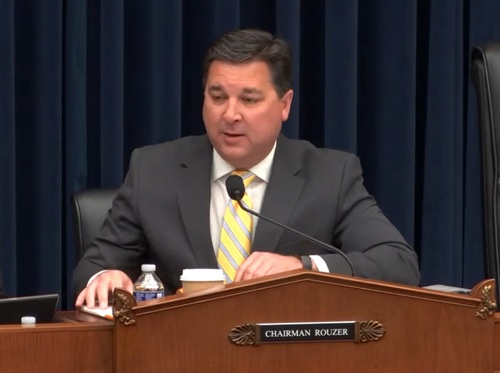
“Ensuring that transit services reflect the needs of the communities served, while providing such services efficiently and safely, is a goal that I believe all lawmakers share,” noted Rep. David Rouzer (R-NC), the subcommittee’s chair, in his opening statement at the hearing.
“We have an opportunity in the next surface bill to ensure that public transportation systems have the flexibilities they need to deliver high quality services,” he said. “Each community is unique in its ridership needs and its delivery of services. And while some systems have reduced or eliminated fares in hopes of increasing their ridership rates, others have pursued innovative strategies to increase efficiency, such as reorienting services and routes, employing microtransit, or expanding use of contracted services.”
JTA’s Ford stressed in his testimony that transit ridership across the U.S. continues to recover for them significant declines suffered during the COVID-19 pandemic and is poised to continue providing critical transportation services for a wide swath of communities across the country.
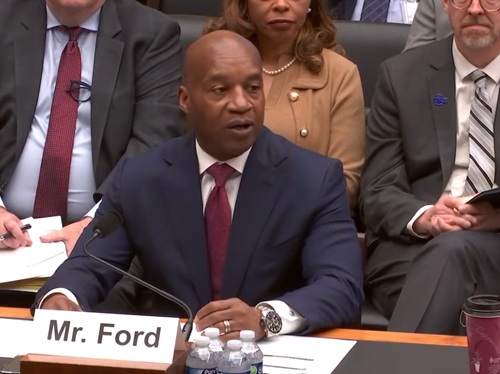
“Americans continue to demonstrate the need for public transportation,” he said. “Our industry has seen ridership steadily increase after falling to 20 percent of 2019 levels in April 2020. Since then, public transit ridership has reached more than 80 percent of 2019 levels, and it continues to grow. For instance, in 2023, ridership increased 16 percent. In 2024, ridership increased by more than 490 million trips, or 7 percent.”
Ford added that it “is important to recognize the enormous scale” of the nation’s public transit ridership even as it continues recovering from the COVID-19 falloff. “Transit riders took 7.7 billion trips in 2024 – an average of 25 million trips each day,” he said. “For millions upon millions of Americans, accessible, affordable public transportation helps families, students, and workers save money and grow the economy.”
[Editor’s note: At a January hearing before the full House T&I Committee, Jim Tymon – executive director of the American Association of State Highway and Transportation Officials – stressed that federal transit and passenger rail programs are also critical to meeting the broad mobility needs of the country. “All state DOTs are truly multimodal … [and] focus on transit, rail, aviation, [plus] ports and waterways to create a seamless and connected transportation system,” Tymon emphasized.]
In rural areas, especially for seniors and people with disabilities, public transportation is a lifeline, Ford emphasized. “Rural residents with disabilities rely heavily on public transit, taking approximately 50 percent more public transit trips than those without disabilities,” he said. “In fact, ridership in rural areas is estimated to be 135 million annual trips.”
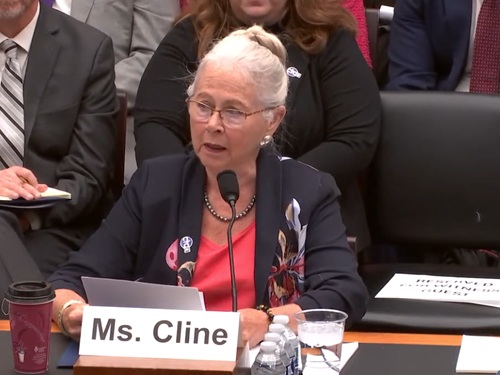
PHT’s Cline highlighted her firm as an example of the important role transit plays in rural areas of the country – noting that PHT serves a 16,500 square-mile service area, from the North Dakota border in the north down to the Nebraska in the south, and that it carried 132,000 passengers in 2024; a nearly 5 percent increase from its pre-pandemic ridership.
“Transit systems serving the nation’s small cities and towns; rural and tribal communities; older adults; people with disabilities, veterans, and non-emergency medical trips comprise this ‘other network’ that often serves in relative obscurity,” Cline said. “They use traditional buses, shuttle buses, vans, minivans and sedans to take their passengers to work, school, medical appointments, shopping, human services and so much more.”
She explained that this “other network” has evolved a right-sized scale and approach to the communities and passengers it serves; deploying technological innovations to enhance performance and efficiency; everything from autonomous vehicle implementations to microtransit applications and on-demand mobility.
“Thanks to increased federal, state and local investment, America’s ‘other’ public transportation network is dynamically rising to meet the growing and changing needs of its communities and
passengers,” Cline stressed. “The nation’s ‘other’ transit network is a highly effective and efficient collection of smaller providers that coordinate a variety of funding sources and contracts into vital mobility that is focused on the needs of their communities and passengers. They are an active and engaged part of the communities that they serve.”
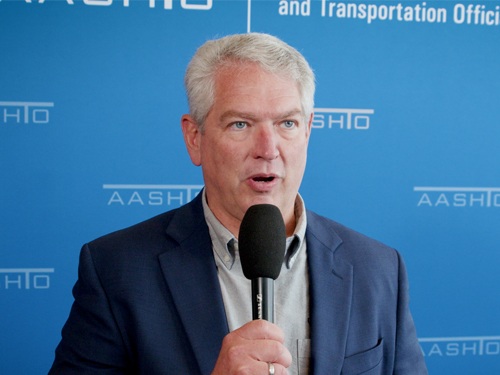 Nation
Nation
WVDOT Profiled in Latest State DOT 2-Minute Update
October 10, 2025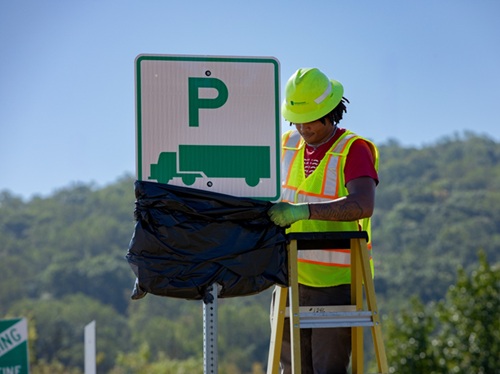 Nation
Nation
